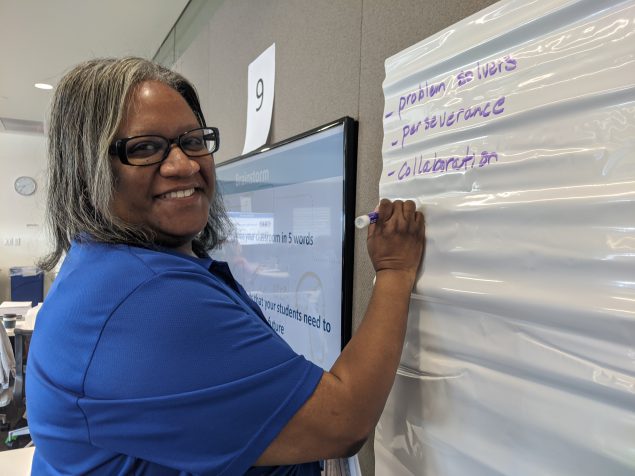Building an Inclusive STEM Workforce
CDC is committed to building a STEM workforce for public health that reflects the diversity of cultures, identities, perspectives, approaches, and competencies represented across the United States. Instituting new ways to support diversity and inclusion in STEM expands the talent base addressing the nation’s public health challenges and helps move us toward achieving health equity.
CDC has declared racism a serious public health threat. Reducing and eliminating health disparities is fundamental to reaching health equity and building a healthier nation. CDC’s Office of Minority Health and Health Equity (OMHHE) advances health equity and women’s health issues across the nation through CDC’s science and programs. OMHHE also increases CDC’s capacity to leverage its diverse workforce and engage stakeholders to this end.
Diversity in the workplace reflects an appreciation and respect for the many differences and similarities in society. This includes varied perspectives, approaches, and competencies of both coworkers at CDC and the populations we serve. At CDC, we define inclusion as a set of behaviors that encourages employees to feel valued for their unique qualities and experience a sense of belonging. Inclusive diversity is a set of behaviors that promote collaboration within a diverse group.
Public health benefits from a variety of perspectives and diverse skill sets. Just as ZIP codes should not determine health outcomes or access to care, neither should ZIP codes determine STEM fluency and access to educational and training opportunities.
Research shows that when bringing together groups of highly skilled people to solve complex problems, more diverse groups tend to do better at finding effective and innovative solutions. As we use STEM to address real-world issues in public health, it is critical to involve people with different backgrounds and experiences who can approach problems from different perspectives. This inclusivity is integral to the kind of problem-solving public health brings to the table. It sparks ingenuity, innovation, and scientific advancement.
CDC provides inclusive public health resources for education and training that reach the STEM community from all corners of the United States, particularly in historically underserved, disadvantaged, and underrepresented populations in the STEM workforce, including Black or African American, Hispanic or Latino, and American Indian or Alaska Native persons; women; and persons with disabilities. By supporting STEM education in the K–12 years and continuing through post-secondary and advanced education and training, CDC helps to reach and build the STEM community across the nation.
One way to prepare students from underrepresented communities for STEM careers is to reach them early—long before they enroll in college. CDC’s educational activities and programs for students focus on introducing STEM concepts early, in the elementary and middle school grades, and continuing to reinforce and build on these concepts through high school.
We also know how important it can be to train educators to be able to teach STEM subjects through a public health lens to support student understanding and literacy. CDC’s turnkey resources and trainings for teachers cover a wide range of STEM topic in public health, as well as different learning styles.

Women are underrepresented in STEM careers and the number of women across STEM jobs varies widely. There are varied paths into the STEM field for women in public health at CDC. See these highlights from a few of the talented women researchers working at NIOSH. After reading these stories please pass them along to other women and girls so they can encourage and inspire the next generation of scientists.
The CDC Office of Women’s Health promotes public health research, evidence-based programs, policies, and strategies to improve the health and safety of all women and girls. The Office serves as a central point for women’s health and raises the visibility of risk factors and other conditions that impact their health. The office collaborates with leadership across CDC and other federal agencies, national organizations, professional associations, consumer groups, researchers, and others with shared interests, solutions, and priorities.
CDC can use various appointment authorities to facilitate hiring persons with intellectual disabilities, severe physical disabilities, and psychiatric disabilities, as well as disabled veterans.